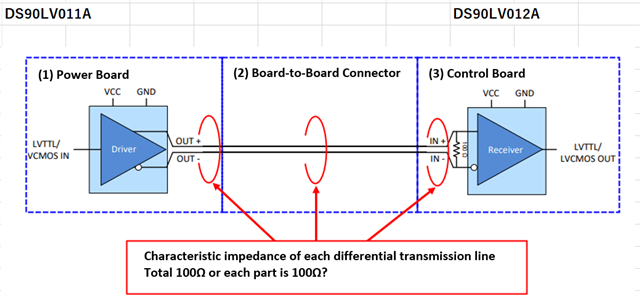Other Parts Discussed in Thread: DS90LV012A
Tool/software:
Daer Team,
My customer uses the DS90LV011A (Driver) and the DS90LV012A (Receiver) for LVDS transmission.
There are three parts from the DS90LV011A to the DS90LV012A. The Power Board, the Board-to-Board Connector and the Control Board.
The characteristic impedance of each differential transmission line is total 100Ω, or each part is 100Ω?

Best Regards,
Koshi Ninomiya

